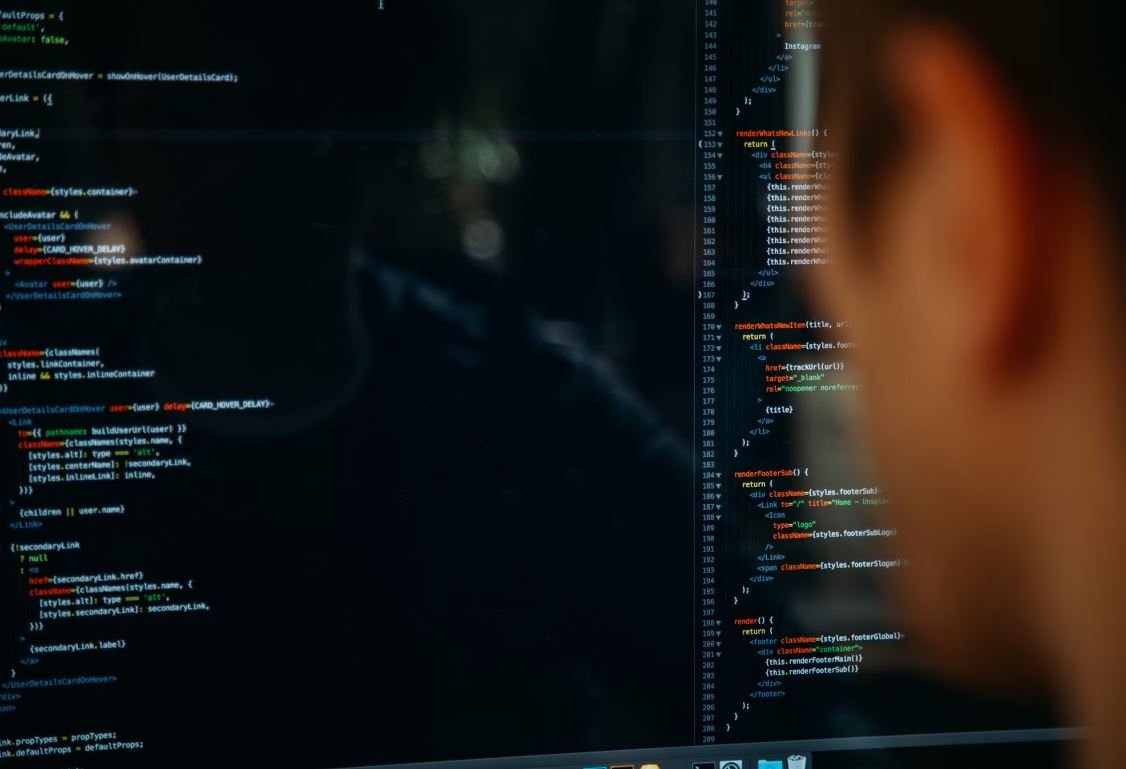What Is Models of Curriculum Development?
In the field of education, curriculum development refers to the process of designing and creating an educational curriculum. A curriculum is a framework that outlines what students should know, understand, and be able to do in a particular subject or field of study. It guides the learning process and provides a structured plan for teachers to follow. Various models of curriculum development exist, each offering a unique approach to designing and implementing educational programs.
Key Takeaways
- Curriculum development is the process of designing an educational curriculum.
- Models of curriculum development offer different approaches to creating and implementing educational programs.
One model of curriculum development is the Tyler Model, which focuses on defining clear objectives, selecting appropriate learning experiences, organizing the curriculum, and evaluating student achievement. This model follows a systematic and logical approach to curriculum design, emphasizing a teacher-centered approach to education. The Tyler Model is widely used and has influenced curriculum development practices around the world.
Another commonly used model is the Taba Model, developed by Hilda Taba. This model emphasizes the importance of considering the needs and interests of students when designing the curriculum. It encourages collaboration between teachers and students, and promotes a more student-centered approach to learning. The Taba Model involves multiple stages, including diagnosing students’ needs, formulating objectives, selecting appropriate learning experiences, organizing the curriculum, and evaluating student progress.
Other models of curriculum development include the Wheeler Model, the Kerr Model, and the Saylor and Alexander Model. Each of these models offers a unique perspective on curriculum design, taking into account factors such as social context, student diversity, and learning theories. These models provide educators with a range of options to choose from when developing curricula, allowing for flexibility and adaptation to different educational settings.
The Tyler Model
| Stage | Description |
|---|---|
| 1 | Defining objectives |
| 2 | Selecting learning experiences |
| 3 | Organizing the curriculum |
| 4 | Evaluating student achievement |
The Taba Model involves the following stages:
- Diagnosing students’ needs
- Formulating objectives
- Selecting learning experiences
- Organizing the curriculum
- Evaluating student progress
One key aspect of curriculum development that is often overlooked is the alignment of curriculum with assessment. It is important that the assessment methods used reflect the learning objectives and content outlined in the curriculum. This ensures that students are assessed appropriately and that the curriculum is effective in promoting learning outcomes.
Curriculum and Assessment Alignment
| Curriculum Element | Assessment Element |
|---|---|
| Learning objectives | Assessment criteria |
| Content | Assessment tasks |
| Learning experiences | Assessment methods |
While models of curriculum development provide a structured framework, it is essential to adapt and modify these models based on the unique needs and context of each educational institution. Curricula should be responsive to societal changes, student diversity, and emerging educational research. Continuous reflection, evaluation, and improvement are key to ensuring the relevance, effectiveness, and success of any curriculum.
Education is not a one-size-fits-all approach, and as such, curriculum development should be tailored to meet the needs of individual learners in various settings. By understanding different models of curriculum development and considering the key elements of curriculum design and alignment, educators can create engaging and meaningful educational experiences for their students.

Common Misconceptions
Misconception 1: Models of Curriculum Development are rigid and cannot be tailored
One common misconception about Models of Curriculum Development is that they are rigid frameworks that cannot be adapted or tailored to suit the specific needs of a particular educational setting. However, it is important to note that while these models provide a structured guideline, they are flexible enough to be modified and customized based on the students’ learning needs and the goals of the educational institution.
- Models of Curriculum Development can be adapted to different grade levels
- Modifying the models allows for catering to different learning styles
- Models can be adjusted to meet specific cultural or societal requirements
Misconception 2: Models of Curriculum Development are a one-size-fits-all solution
Another misconception is that Models of Curriculum Development are designed as a universal solution that can be applied uniformly to all educational settings and subjects. However, each educational system and subject has its own unique requirements and objectives. Therefore, it is necessary to consider these factors while implementing a Curriculum Development Model.
- Models should be adapted to align with different subjects and disciplines
- The level of complexity may vary based on the educational level
- Models need to be flexible to accommodate regional or national educational policies
Misconception 3: Models of Curriculum Development stifle teacher creativity
Some people believe that Models of Curriculum Development limit the creativity of teachers and hinder their ability to design innovative teaching methods and materials. However, these models actually provide a framework within which teachers can exercise their creativity while still ensuring that the required learning outcomes are achieved.
- Teachers can incorporate their own ideas within the framework
- Models offer support and guidance to enhance teaching strategies
- Creativity is encouraged through adapting the models to real-life scenarios
Misconception 4: Models of Curriculum Development focus solely on content
A common misconception is that Models of Curriculum Development only focus on the content that needs to be taught, neglecting other important aspects such as assessment, instructional strategies, and student engagement. However, these models take into account the various components of curriculum and provide a holistic approach to curriculum development.
- Including assessment methods and strategies within the model
- Models incorporate instructional strategies that cater to diverse learners
- Emphasizing student engagement and active learning methodologies
Misconception 5: Models of Curriculum Development are static and unchanging
Lastly, some believe that Models of Curriculum Development are static and unchanging over time. However, curriculum models are continuously evolving to adapt to changing educational trends, advancements in technology, and the needs and demands of a dynamic society.
- Models are revised to meet the requirements of a rapidly changing world
- New models are being developed to address emerging educational challenges
- Models are flexible to accommodate advancements in teaching and learning techniques

Introduction
Curriculum development is a critical aspect of education, as it influences what students learn and how they learn it. There are various models of curriculum development, each offering a different approach to organizing and delivering educational content. This article explores different models of curriculum development and their key characteristics.
Model 1: The Tyler Model
The Tyler Model, developed by Ralph Tyler in 1949, is a widely recognized curriculum development model. It entails four essential steps: identifying educational objectives, developing appropriate learning experiences, organizing learning activities, and evaluating student achievements.
Model 2: The Taba Model
The Taba Model, proposed by Hilda Taba in the 1960s, emphasizes a student-centered approach to curriculum development. It involves seven steps: diagnosing students’ needs, formulating instructional objectives, selecting appropriate content, organizing learning experiences, selecting teaching strategies, evaluating student progress, and revising the curriculum.
Model 3: The Wheeler Model
The Wheeler Model, introduced by David Wheeler, focuses on the societal and technological context of curriculum development. It involves three stages: analysis of societal needs, formulation of educational objectives in response to societal needs, and organization of learning experiences based on societal needs and objectives.
Model 4: The CIPP Model
The CIPP (Context, Input, Process, Product) Model, developed by Stufflebeam and Shinkfield, provides a comprehensive framework for curriculum development. It encompasses four interrelated components: context evaluation, input evaluation, process evaluation, and product evaluation.
Model 5: The Humanistic Model
The Humanistic Model of curriculum development emphasizes the holistic development of students. It strives to promote personal growth, self-actualization, and emotional well-being. This model prioritizes student autonomy, creativity, and critical thinking skills.
Model 6: The Social Reconstruction Model
The Social Reconstruction Model aims to develop a curriculum that addresses social inequalities, injustices, and conflicts. It encourages students to critically analyze societal issues and actively engage in social change. This model promotes social justice, equity, and inclusivity.
Model 7: The Posner Model
The Posner Model, proposed by G. J. Posner, emphasizes the development of intellectual abilities and critical thinking skills. It involves seven steps: determining the objectives of instruction, structuring instructional content, developing appropriate learning activities, organizing content sequence, selecting suitable teaching strategies, evaluating learning outcomes, and revising the curriculum based on evaluation results.
Model 8: The Montessori Model
The Montessori Model, developed by Maria Montessori, adopts a child-centered approach in curriculum development. It focuses on hands-on, experiential learning, individualized instruction, and mixed-age classrooms. This model promotes independence, self-discipline, and the development of practical life skills.
Model 9: The Learner-Centered Model
The Learner-Centered Model places the learner at the center of the curriculum development process. It emphasizes student interests, needs, and aspirations. This model promotes active learning, collaboration, and the integration of real-world experiences into the curriculum.
Model 10: The Backward Design Model
The Backward Design Model, developed by Grant Wiggins and Jay McTighe, starts with the desired learning outcomes and then works backward to determine the appropriate instructional strategies and assessment methods. This model emphasizes the alignment between instructional objectives, assessment, and instruction.
Overall, curriculum development models provide educators with frameworks and strategies to design effective educational programs. Each model offers unique perspectives on how to organize and deliver learning experiences. By understanding these models, educators can make informed decisions about curriculum development, ultimately enhancing the learning experiences of students.
Frequently Asked Questions
What is models of curriculum development?
Models of curriculum development refer to systematic approaches or frameworks that are used to design and develop educational curricula. These models provide a structured process for planning, implementing, and evaluating curriculum content and instructional strategies.
Why are models of curriculum development important?
Models of curriculum development are important because they help educators create well-rounded and effective curricula. By following a specific model, educators can ensure that all important aspects of curriculum design, such as identifying learning goals, selecting appropriate instructional methods, and assessing student learning, are considered.
What are some common models of curriculum development?
There are several common models of curriculum development, including the Tyler Model, the Taba Model, the Wheeler Model, the Hilda Taba Model, and the Backward Design Model. Each model has its own unique approach to curriculum development, but all aim to provide a structured framework for educators to design and develop effective curricula.
How does the Tyler Model of curriculum development work?
The Tyler Model, developed by Ralph Tyler, is a linear model that emphasizes the objectives of education. According to this model, educators must identify clear learning objectives, select appropriate learning experiences, organize the curriculum content, and evaluate student learning based on the defined objectives.
What is the Taba Model of curriculum development?
The Taba Model, developed by Hilda Taba, is a cyclical model that focuses on a constructivist approach to curriculum development. This model involves a four-step process, including diagnosis, formulation of objectives, selection of content and learning experiences, and organization of the curriculum. It emphasizes the active involvement of students in the learning process.
Can you explain the Wheeler Model of curriculum development?
The Wheeler Model, developed by David Wheeler, is a model that emphasizes the interrelationship between curriculum development and society. This model includes an analysis of societal factors, such as cultural, political, and economic influences, to inform curriculum design. It aims to create a curriculum that is responsive to the needs and demands of the society.
What is the Hilda Taba Model of curriculum development?
The Hilda Taba Model, developed by Hilda Taba, is an iterative and recursive model that focuses on the integration of subjects and interdisciplinary learning. This model involves a seven-step process, including diagnosis, specifying objectives, selecting content and learning experiences, organization of learning experiences, evaluation, revising objectives, and evaluation. It aims to create an integrated and meaningful curriculum for students.
How does the Backward Design Model of curriculum development work?
The Backward Design Model, developed by Jay McTighe and Grant Wiggins, is a model that starts with defining the desired learning outcomes and then works backward to design instructional activities and assessments. This model emphasizes the importance of clearly defined learning goals and assessment criteria in guiding the design and development of curriculum.
Are there any other models of curriculum development?
Yes, there are various other models of curriculum development, including the Montessori Model, the Social Efficiency Model, the Humanistic Model, and the Cognitive Development Model. Each model offers a unique perspective and approach to curriculum development, catering to different educational philosophies and goals.
Which model of curriculum development is the best?
There is no one-size-fits-all answer to this question as the best model of curriculum development depends on various factors, such as educational context, goals, and philosophy. Educators should select a model that aligns with their educational objectives and values, and consider the unique needs and characteristics of their learners.




